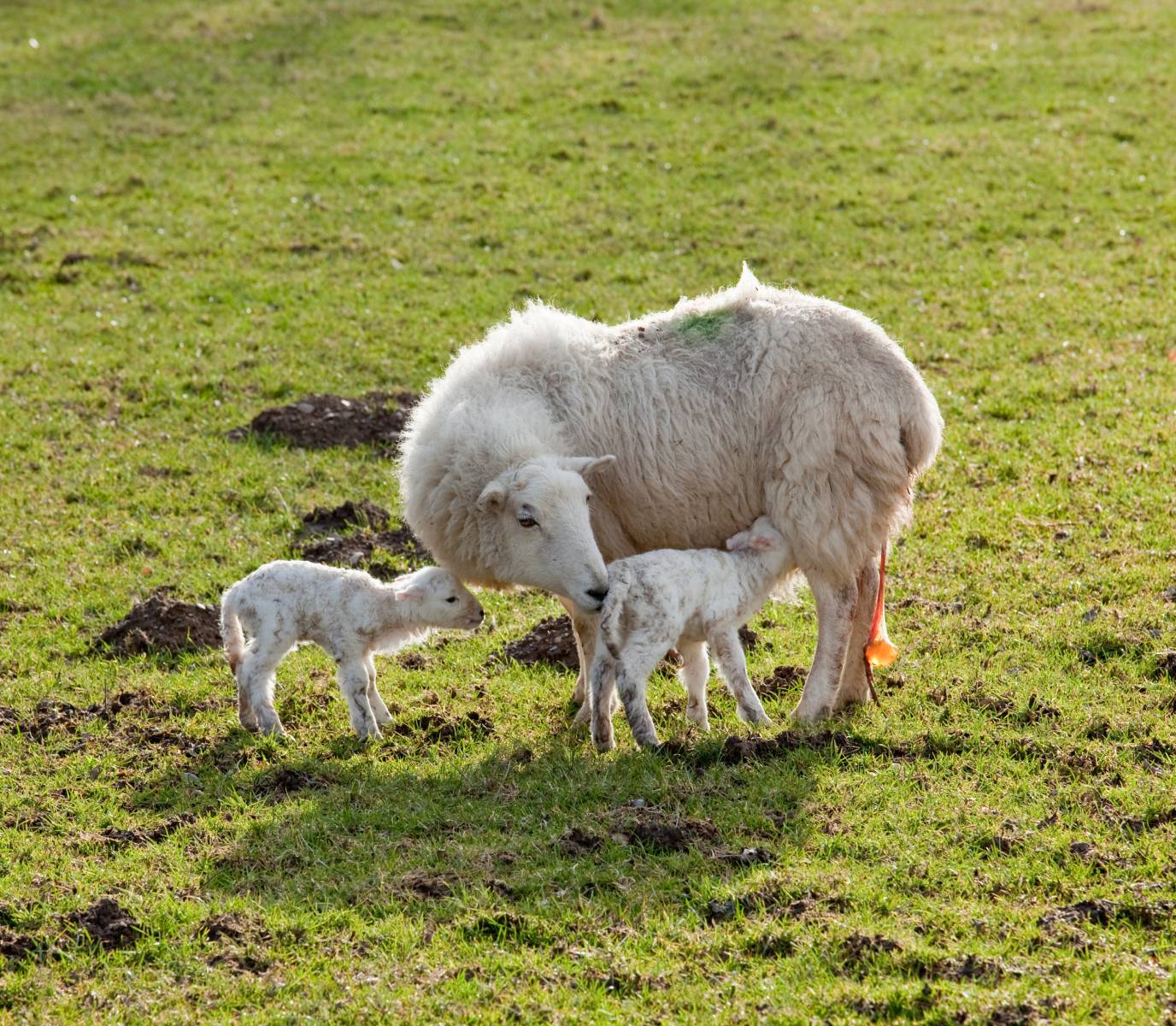How long are sheep pregnant for? Once you’ve identified the pregnant sheep signs, get ready with your own sheep lambing calendar to prepare.
As lambing and kidding season approaches it is time to get prepared. Many aspects of lambing and kidding are completely out of our control. But making sure to do well at the things we do have control over will make for a much smoother season. Whether it is your first birthing season or you are an experienced veteran, there are some things you should do in preparation to have the most successful season possible.
6 Weeks Before Due Dates
Dry Off Lactating Females
If you are raising dairy animals that are still lactating, then you need to stop milking them, which is called “drying off.” This needs to happen 6 weeks before they are due to give birth so that their body can focus all energy and nutrition on the new baby to be born. There are many methods to dry off a doe, and it is important you don’t just stop milking immediately in one day. It needs to be done gradually to prevent mastitis.
Shearing
Ewes should be shorn 6 weeks before giving birth. This is important for several reasons. It gives you a good view of their body condition so you can feed them accordingly at the end of the pregnancy. It also keeps the ewe cleaner during and after birthing, and makes it much easier for the newborn lambs to nurse because they won’t accidentally try to nurse on dangling wool and can easily find the udder. If you live in a colder climate, a ewe with full fleece will be hot during labor and delivery and could choose to lay down in the snow or a cold location to give birth, thus increasing the chance of hypothermia and death of the lambs. It also will keep the break in the fleece closer to the end of the fiber, giving you a higher-quality fleece off the ewe.
If the ewe is birthing very early in the year and it will be too cold to shear her 6 weeks in advance, then you can shear just around her rear end and udder (called crotching or crutching). That way she will stay clean and the lamb will find the udder easily and be able to nurse. You can then shear her fully after she lambs. Do not shear a ewe closer to delivery than 6 weeks. The stress and handling during shearing can cause a miscarriage or other problems with the lamb.
Diet Shift
Depending on the body condition of your ewe or doe, you should start shifting her diet at 6 weeks out from delivery. If she is overweight, you should wait a couple more weeks to start the shift. But for average and underweight females, start the gradual shift in diet at 6 weeks out so that she has the nutrition needed to finish the pregnancy with a strong, healthy baby. Be sure to make all diet changes gradually.
5 Weeks Before Due Dates
Birthing Kit
If you already have a birthing kit, you need to inventory, clean, and restock it. If you don’t have one yet, you need to make one. This is the time of year we also check and restock our vet kit. For a comprehensive list of what to put in a lambing/kidding kit and a vet kit, you can read this post over at my blog, Willow Creek Farm.

4 Weeks Before Due Dates
Vaccinate
It is important to consult your vet about what vaccinations to do and when. At the advice of our vet, we vaccinate our ewes and does at 4 weeks before delivery with certain vaccinations so that some immunity can pass to the baby.
Diet Shift
Continue your gradual diet shift, starting it now with the overweight females.
3 Weeks Before Due Dates
Set Up Birthing Areas
Prepare your birthing areas, being sure you have bedding ready and specific areas separated off or ready to be separated off. In today’s world, cameras are readily available and reasonably priced. Consider installing a camera to your birthing areas to make night checks easier.
Records
Prepare your record-keeping sheets so you can keep accurate records throughout the season.

2 Weeks Before Due Dates
Diet Shift
By now, all pregnancy diets should have been gradually shifted and they should now be on 100% alfalfa to help provide the needed nutrition for the end of pregnancy and to help prevent pregnancy toxemia and other complications. If needed, you should also be providing some grain to supplement their diet.
Watch for Symptoms and Keep Records
Start watching the ewes and does for symptoms of impending labor and delivery. Changes will occur with their belly and pelvis, their back end, their udder, and their behavior. Keeping records of each female’s symptoms can help you next year to be able to know about when they are ready to deliver.

1 Week Before Due Dates
Continue watching for symptoms and keeping good records through the end of pregnancy and delivery. Keep a close eye on ewes and does expecting multiples, watching for signs of pregnancy toxemia. And through the sleepless nights and constant checks don’t forget to enjoy the most miraculous season on the homestead – birthing season!
Kat Ludlam has been homesteading in Colorado for 15 years now. She and her husband, Daniel, are the owners of Willow Creek Farm, where they breed and raise specialty wool sheep, milk sheep, Nubian goats, chickens, Muscovy ducks, and crops that thrive in their location. They also own and run a custom fiber processing mill, Willow Creek Fiber Mill . Kat loves to feed her family from their land, and teach others to homestead as well.
All MOTHER EARTH NEWS community bloggers have agreed to follow our Blogging Guidelines, and they are responsible for the accuracy of their posts.
